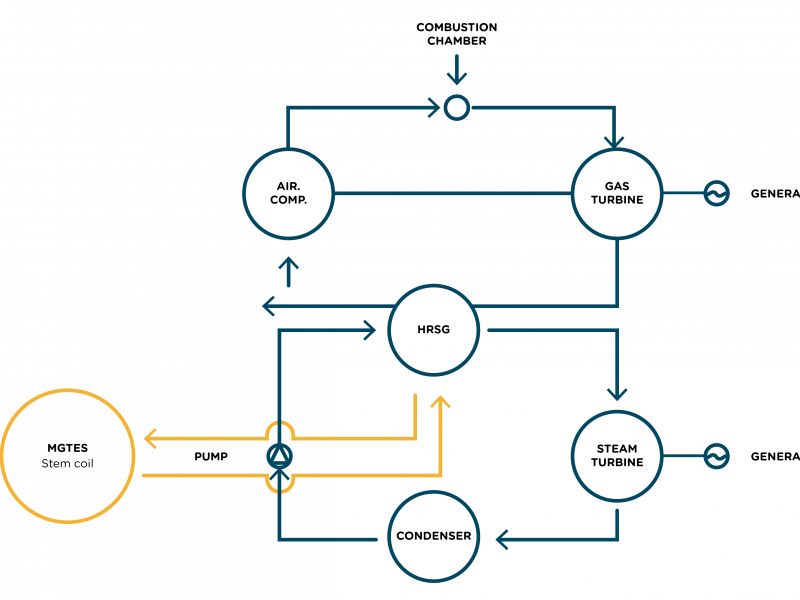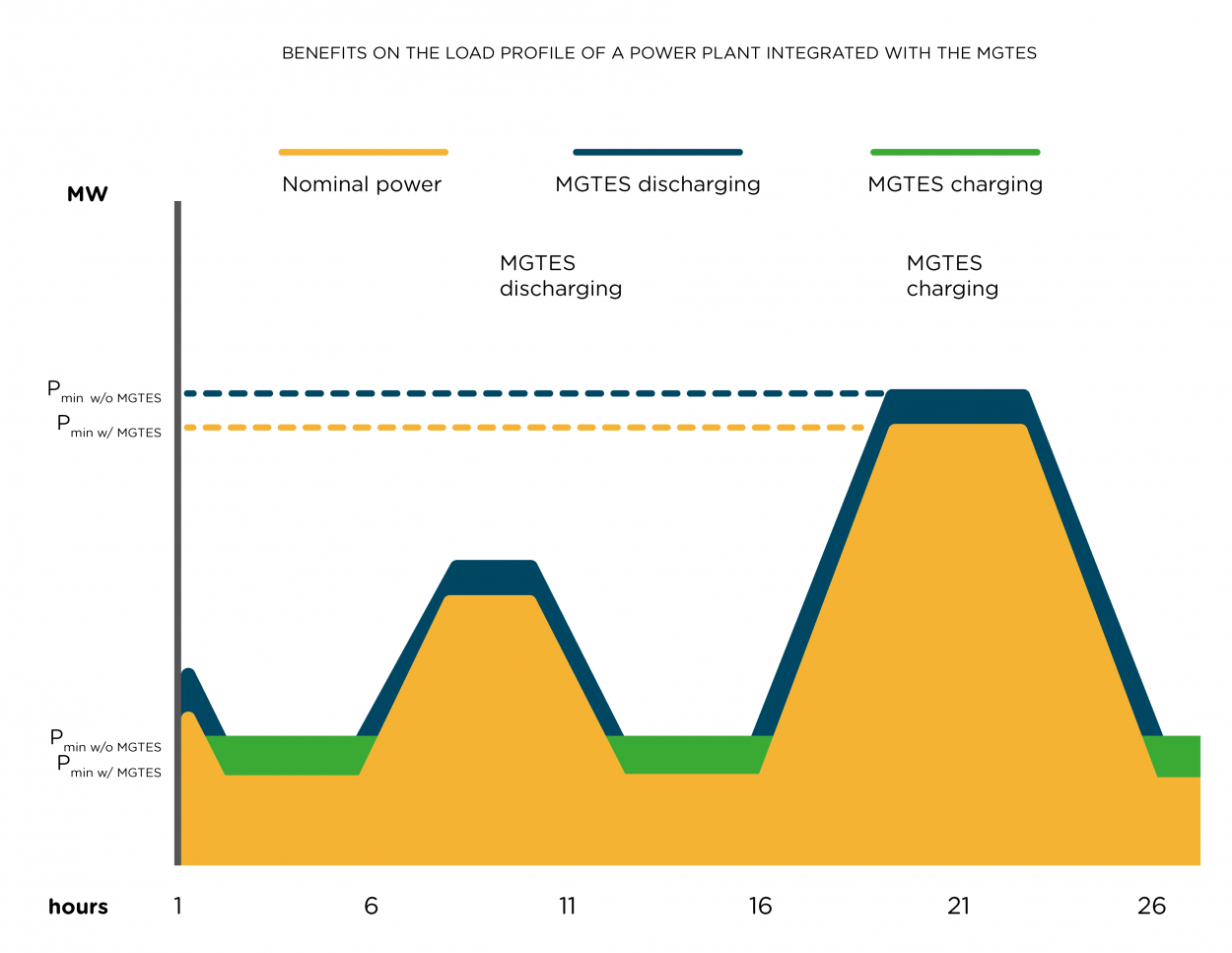Increase Flexibility In Thermoelectric Power Plants
Thanks to the stringent decarbonization policies, a strong increase in the penetration of renewables within the electricity system is expected
This large increase in non-programmable renewable sources, especially photovoltaics, can lead to overgeneration in specific moments of the day, generating an imbalance in the planning of electricity generation. Most conventional generating units, like coal power plants or Combined Cycle Gas Turbine (CCGT) power plants, needs to adapt to this new operating condition, moving from base load to highly variable load operation. This change can significantly reduce plant performances, damage components and reduce service life.

One of the possible applications of the MGTES is its integration into the steam section of existing thermoelectric power plants. In such plants – Rankine cycle or CCGT – the MGTES can be used to reduce the minimum load and to offer a back up thermal power to be used when needed. This results in a greater flexibility.
The minimum load is the minimum electrical power at which the plant generation section, consisting of a steam generator, a steam turbine and a power transformer, can operate indefinitely with full stability and in compliance with the assigned technical limits and polluting emissions. A power plant operates at its minimum load when producing electricity is not profitable, but it is still more convenient than shutting down and reigniting the plant within a relatively short time.
Every shut down and reignition reduces the plant efficiency and service life, and increases the O&M costs; moreover, the process is slow and, in the transitory phases, prevents the plant from regulating the power with the speed needed to follow the load variations. The lower the technical load, the less unprofitable is to operate the plant when the price of electricity is low. The diagram shows an example of how, the integration of the MGTES in a power plant, modifies its nominal power profile.

Benefits on the load profile of a power plant integrated with the STEM-RES (reduction of the minimum load and increase of available power).
When the plant operates at its minimum load, the MGTES stores a part of the thermal energy produced by the steam generator (in green) – thus reducing the minimum load itself from the point of view of the electricity grid the plant is connected to – and returns the stored energy when the demand increases and it is profitable to operate the plant normally. The stored heat is a reserve of available power (in blue) to produce more steam to feed the power-block, increasing the power at which the plant works.
To recap, the integration of the MGTES into a thermoelectric power plant produces several benefits for both the Utility and the Transmission System Operator (TSO). Summing up, for the utility:
- Increases flexibility of the plant according to the fluctuation of electricity prices on the market.
- Preserves the integrity of the plant components, reducing the overall numbers starts and stop.
- Increases the available power for the supply of grid regulation services that can be spent on the Dispatching Services Market (MSD)






